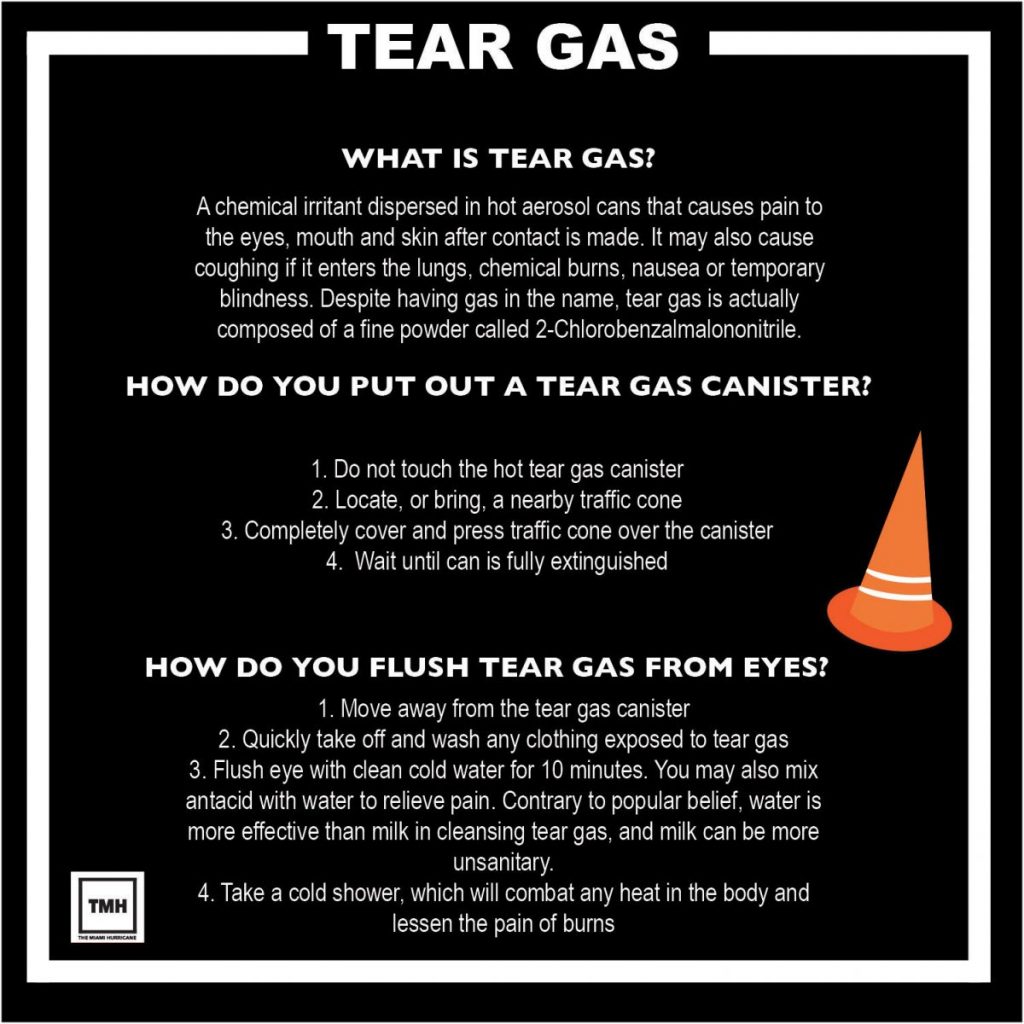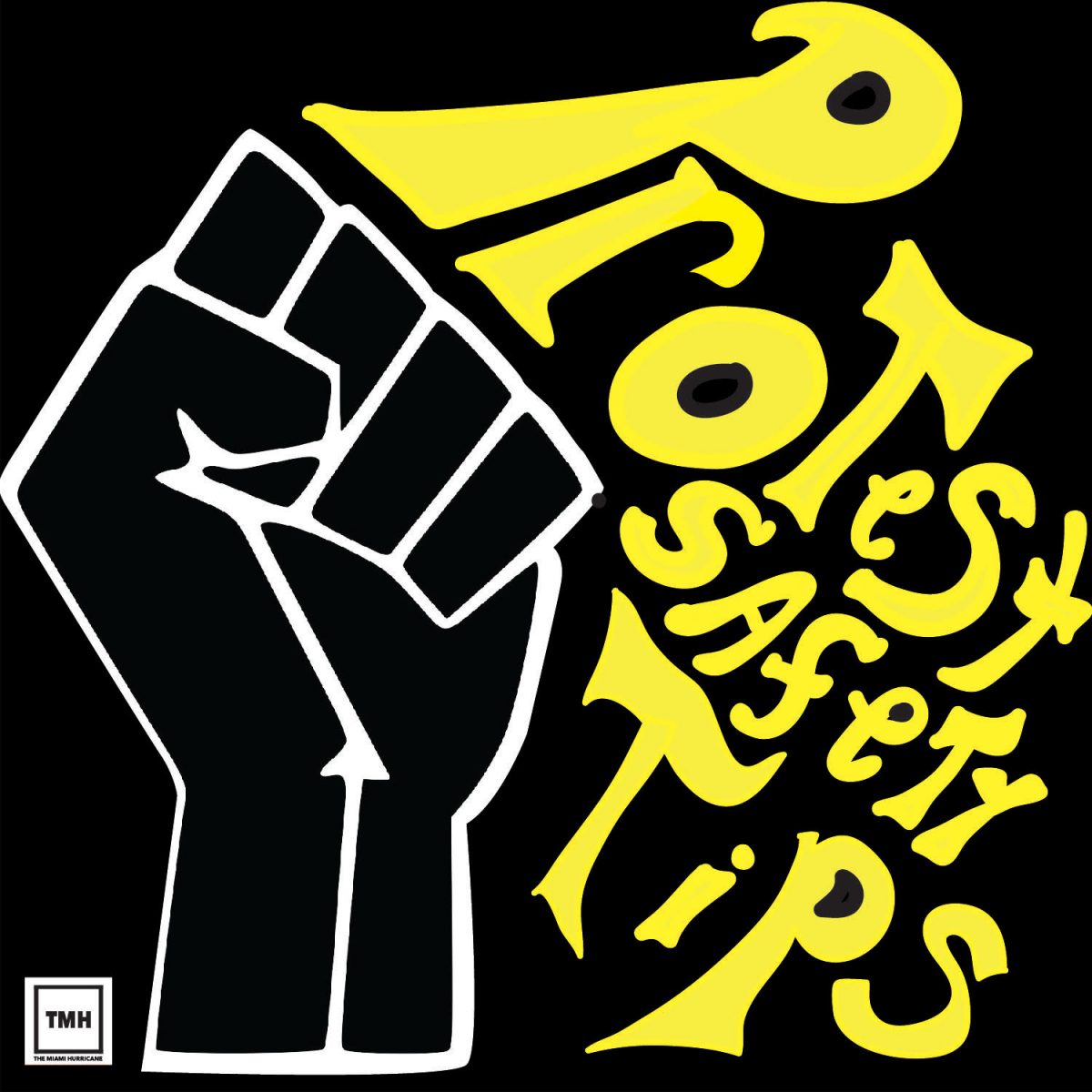Protests demanding racial justice are now in their fifteenth day following the death of George Floyd, a black man who died after Minneapolis police officer Derek Chauvin pressed his knee on Floyd’s neck for 8 minutes and 46 seconds during an arrest on May 25.
For those ready to join in and exercise their constitutional right to protest, there are some things you must keep in mind.
While the majority of protests have been peaceful so far, protestors must be aware of possible risks including arrest, tear gas, exposure to coronavirus and other possible uncontrollable variables.
Here is a guide on how to protest and do so safely.

How to find a protest
The first and obvious step is to find a nearby protest to attend. In this case, social media is the most valuable resource. By checking the event section in Facebook or through a quick search on Twitter, finding protests nearby can be simple, with protests happening nearly every day in many cities, and even multiple times per day in some places.
For more results, check out local advocacy groups, such as a local Black Lives Matter chapter, to see if they are organizing anything.
Make sure to get as much information as you can about each protest you find. Research who is organizing the protest, who might be attending and any other important details you can in order to avoid being trapped in a potentially dangerous or fake protest organized by anti-protestors.
Make a plan
Once you know what protest you’re going to, find a friend or group of friends to go with. Attending a protest alone can be very dangerous. Discuss where to meet and what to do if you happen to get separated from one another.
It may also be a good idea to share your location with a family member or someone you trust in case of emergency.
What to wear
Protecting yourself and others at these protests is very important, and what you wear plays a big factor in this.
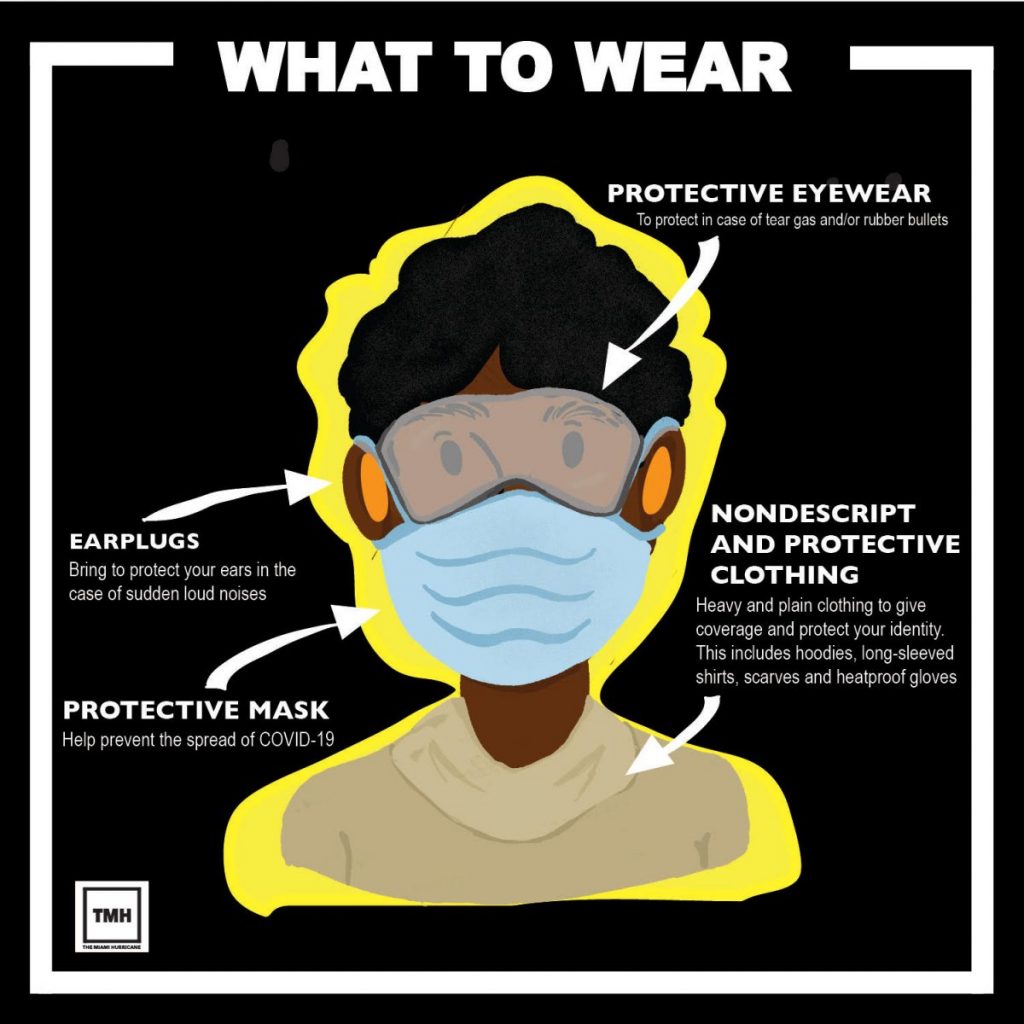
1. A mask – In order to slow the spread of COVID-19 wearing a mask while at protests is crucial. Social distancing at most marches is nearly impossible, therefore making sure to pack a mask is important, both for your own health and the health of those around you.
2. Nondescript and protective clothing – Any special clothing or accessories that could be later used to identify you should be avoided. To prevent skin irritation from possible tear gas, protestors should wear long-sleeved shirts or layer with hoodies or jackets for more protection. Covering up skin is also useful in hiding identifiable tattoos. However, in the summer heat, this can be brutal. If you choose to wear extra protective layers, make sure to pack plenty of water and try to stay cool.
3. Comfortable, closed-toe shoes – Protect your feet and keep them comfortable for a long march or an extended period of time standing.
4. Protective eyewear – Protective eyewear such as safety goggles should be worn to shield eyes from both tear gas and rubber bullets, should that be used by the police. However, swimming goggles should not be used, as the suction can be bad for your eyes.
5. Earplugs – Bring a pair to protect your ears in case of sudden loud noises.
What not to wear
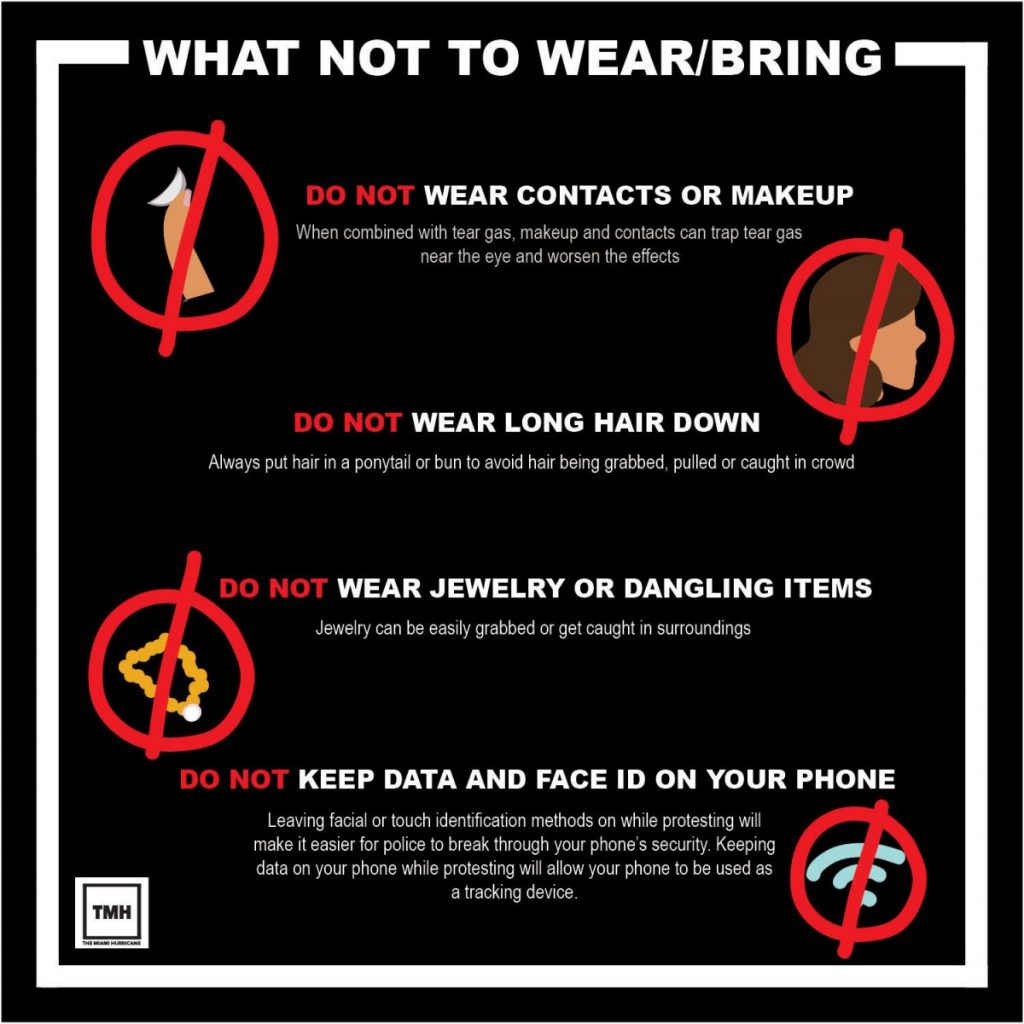
1. Do not wear contacts or makeup – When combined with tear gas, makeup and contacts can trap tear gas near the eye and worsen the effects.
2. Do not wear long hair down – Avoid hair being pulled or caught in a crowd by tying up long hair into a ponytail or a bun.
3. Leave jewelry and dangling items at home – Jewelry or dangling can be easily grabbed or caught in the surrounding. Jewelry, especially valuables, should be left at home.
What to bring
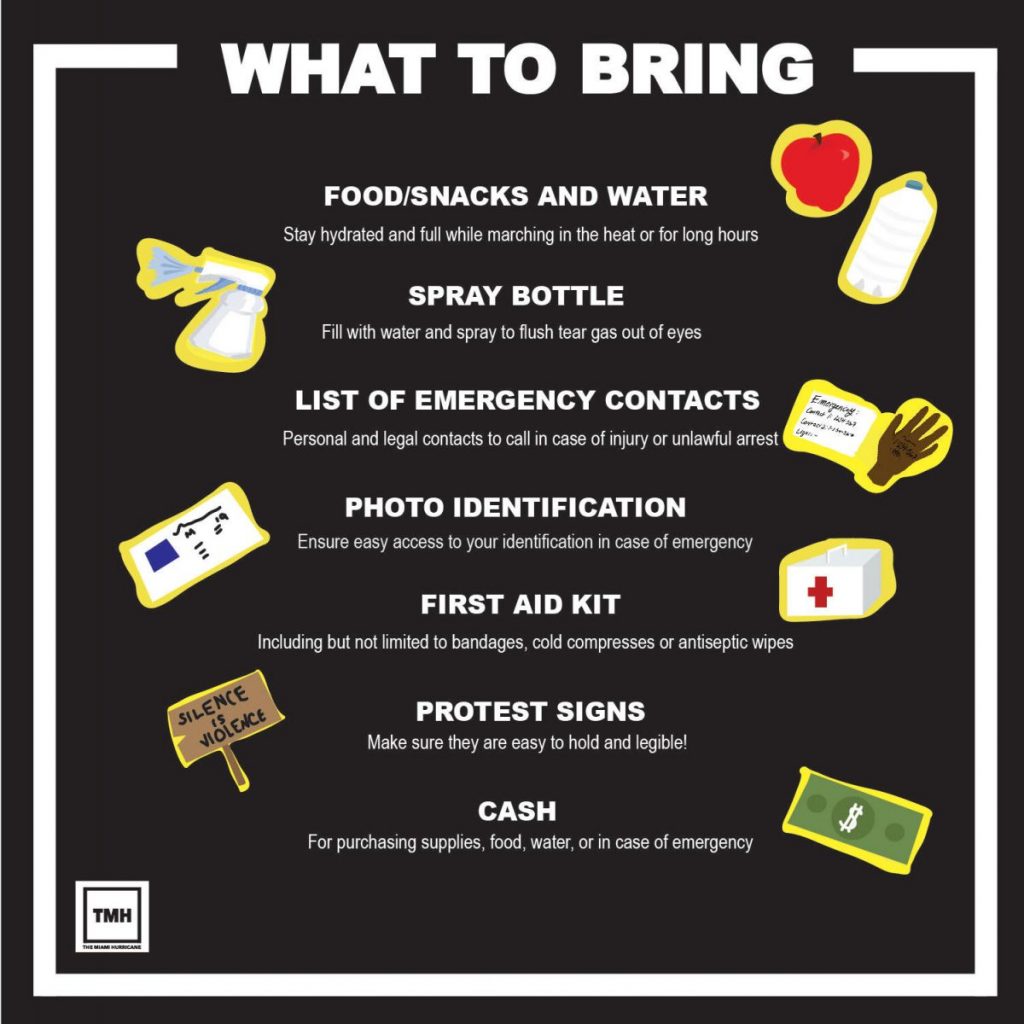
1. Food, snacks and water – Marching in the heat or for long hours can cause fatigue and possible heat stroke. Make sure to bring a backpack with some snacks and water for you and your group to stay hydrated and healthy throughout the protest.
2. Spray bottle – While you can also use a water bottle, it is be a good idea to bring a spray bottle filled with water to flush out your eyes in case the police release tear gas at your protest.
3. List of emergency contacts – Many people have been writing down emergency contacts on their bodies in marker or pen. However, you can also carry a list on your person.
4. Photo identification – In case of an emergency, bring an official photo ID.
5. Protest signs – Bringing a sign is a great way to show support and make it clear what you stand for. However, making a meaningful sign does not have to be an arts and crafts contest. You can write down whatever message it is you wish to march for on a sign using old cardboard from a package or whatever you have lying around your house. The most important thing is to make sure the sign is legible and easy to hold.
6. Cash – Bring along cash to purchase food, water, pay for transportation or in case of an emergency.
7. Other items you may want to bring include but are not limited to: A first aid kit, hand sanitizer, sunscreen (make sure it is not oil-based as that easily absorbs tear gas), a portable charger and a flashlight (if protesting at night).
Extra safety tips
Turn off data and face ID on your phone while protesting – Face ID or touch identification can be used by the police to easily break through your phone’s security. Likewise, leaving data on is also possibly dangerous while protesting as it will allow your phone to be used as a tracking device.
What you need to know about tear gas
Police officers have been releasing tear gas to disperse protests, both peaceful and unpeaceful. Tear gas can be both very painful and cause serious damage and irritation to the eyes and skin. In the case that tear gas is used at whichever protests you attend, here is what you need to know, according to popularscience.com
